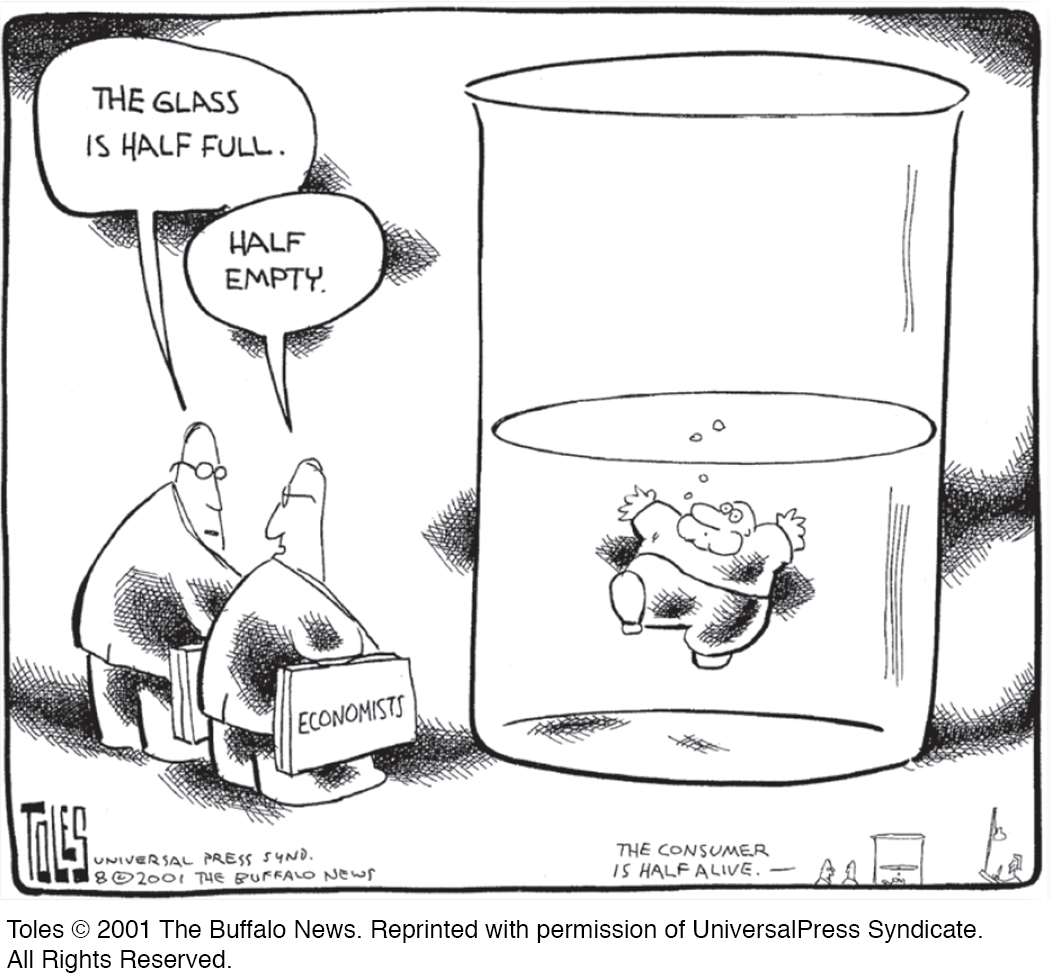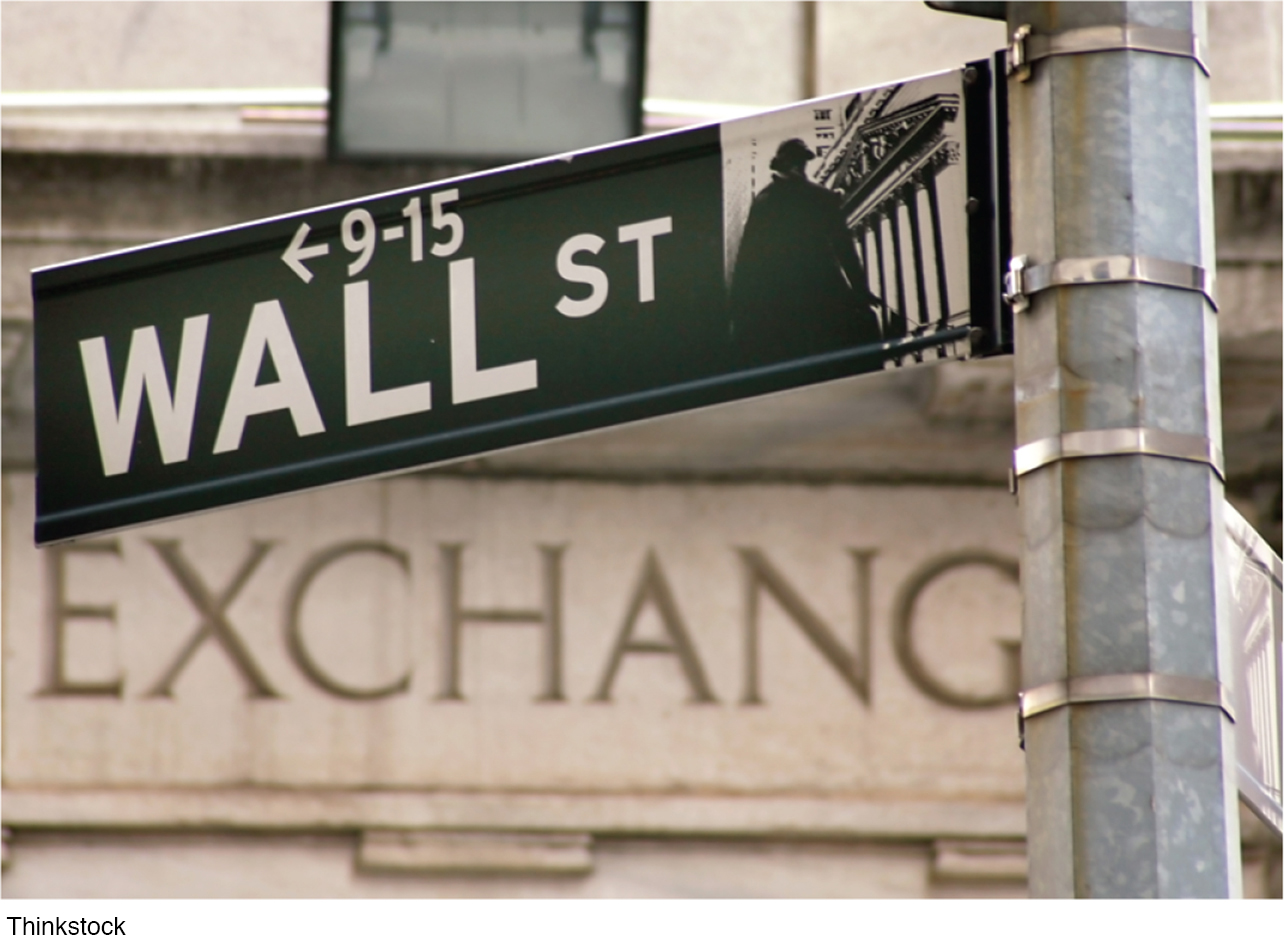2.2 Using Models
Economics, we have now learned, is mainly a matter of creating models that draw on a set of basic principles but add some more specific assumptions that allow the modeler to apply those principles to a particular situation. But what do economists actually do with their models?
Positive versus Normative Economics
Imagine that you are an economic adviser to the governor of your state. What kinds of questions might the governor ask you to answer?
Well, here are three possible questions:
How much revenue will the tolls on the state turnpike yield next year?
How much would that revenue increase if the toll were raised from $1 to $1.50?
Should the toll be raised, bearing in mind that a toll increase will reduce traffic and air pollution near the road but will impose some financial hardship on frequent commuters?
There is a big difference between the first two questions and the third one. The first two are questions about facts. Your forecast of next year’s toll collection will be proved right or wrong when the numbers actually come in. Your estimate of the impact of a change in the toll is a little harder to check—
But the question of whether tolls should be raised may not have a “right” answer—
38
Positive economics is the branch of economic analysis that describes the way the economy actually works.
Normative economics makes prescriptions about the way the economy should work.
This example highlights a key distinction between two roles of economic analysis. Analysis that tries to answer questions about the way the world works, which have definite right and wrong answers, is known as positive economics. In contrast, analysis that involves saying how the world should work is known as normative economics. To put it another way, positive economics is about description; normative economics is about prescription.
Positive economics occupies most of the time and effort of the economics profession. And models play a crucial role in almost all positive economics. As we mentioned earlier, the U.S. government uses a computer model to assess proposed changes in national tax policy, and many state governments have similar models to assess the effects of their own tax policy.
A forecast is a simple prediction of the future.
It’s worth noting that there is a subtle but important difference between the first and second questions we imagined the governor asking. Question 1 asked for a simple prediction about next year’s revenue—
The answers to such questions often serve as a guide to policy, but they are still predictions, not prescriptions. That is, they tell you what will happen if a policy were changed; they don’t tell you whether or not that result is good.
Suppose your economic model tells you that the governor’s proposed increase in highway tolls will raise property values in communities near the road but will hurt people who must use the turnpike to get to work. Does that make this proposed toll increase a good idea or a bad one? It depends on whom you ask. As we’ve just seen, someone who is very concerned with the communities near the road will support the increase, but someone who is very concerned with the welfare of drivers will feel differently. That’s a value judgment—
Still, economists often do engage in normative economics and give policy advice. How can they do this when there may be no “right” answer?
One answer is that economists are also citizens, and we all have our opinions. But economic analysis can often be used to show that some policies are clearly better than others, regardless of anyone’s opinions.
Suppose that policies A and B achieve the same goal, but policy A makes everyone better off than policy B—
For example, two different policies have been used to help low-
When policies can be clearly ranked in this way, then economists generally agree. But it is no secret that economists sometimes disagree.
When and Why Economists Disagree
Economists have a reputation for arguing with each other. Where does this reputation come from, and is it justified?
One important answer is that media coverage tends to exaggerate the real differences in views among economists. If nearly all economists agree on an issue—
39

It is also worth remembering that economics is, unavoidably, often tied up in politics. On a number of issues powerful interest groups know what opinions they want to hear; they therefore have an incentive to find and promote economists who profess those opinions, giving these economists a prominence and visibility out of proportion to their support among their colleagues.
While the appearance of disagreement among economists exceeds the reality, it remains true that economists often do disagree about important things. For example, some well respected economists argue vehemently that the U.S. government should replace the income tax with a value-
One important source of differences lies in values: as in any diverse group of individuals, reasonable people can differ. In comparison to an income tax, a value-
A second important source of differences arises from economic modeling. Because economists base their conclusions on models, which are simplified representations of reality, two economists can legitimately disagree about which simplifications are appropriate—
Suppose that the U.S. government were considering introducing a value-
Because the economists have used different models—
In most cases such disputes are eventually resolved by the accumulation of evidence showing which of the various models proposed by economists does a better job of fitting the facts. However, in economics, as in any science, it can take a long time before research settles important disputes—
The important point is that economic analysis is a method, not a set of conclusions.
ECONOMICS in Action
Economists, Beyond the Ivory Tower
 | interactive activity
| interactive activity
Many economists are mainly engaged in teaching and research. But quite a few economists have a more direct hand in events.
The one specific branch of economics that seeks to understand what assets like stocks and bonds are worth, is finance theory. It plays an important role for financial firms on Wall Street—
40
Some of the economists employed in the business world work directly for the institutions that need their input. Top financial firms like Goldman Sachs and Morgan Stanley, in particular, maintain high-
Last but not least, economists participate extensively in government. According to the Bureau of Labor Statistics, government agencies employ about half of the professional economists in the United States. This shouldn’t be surprising: one of the most important functions of government is to make economic policy, and almost every government policy decision must take economic effects into consideration. So governments around the world employ economists in a variety of roles.

In the U.S. government, a key role is played by the Council of Economic Advisers, whose sole purpose is to advise the president on economic matters. Unlike most government employees, most economists at the Council aren’t longtime civil servants; instead, they are mainly professors on leave for one or two years from their universities. Many of the nation’s best-
Economists also play an important role in many other parts of the government, from the Department of Commerce to the Labor Department. Economists dominate the staff of the Federal Reserve, a government agency that controls the economy’s money supply and oversees banks. And economists play an especially important role in two international organizations headquartered in Washington, D.C.: the International Monetary Fund, which provides advice and loans to countries experiencing economic difficulties, and the World Bank, which provides advice and loans to promote long-
In the past, it wasn’t that easy to track what all these economists working on practical affairs were up to. These days, however, there are very lively online discussions of economic prospects and policy. See, for example, the home page of the International Monetary Fund (www.imf.org), a business-
Quick Review
Positive economics—
the focus of most economic research— is the analysis of the way the world works, in which there are definite right and wrong answers. It often involves making forecasts. But in normative economics, which makes prescriptions about how things ought to be, there are often no right answers and only value judgments. Economists do disagree—
though not as much as legend has it— for two main reasons: (1) they may disagree about which simplifications to make in a model and (2) they may disagree about values.
Check Your Understanding 2-
Question 2.5
1. Which of the following statements is a positive statement? Which is a normative statement?
Society should take measures to prevent people from engaging in dangerous personal behavior.
This is a normative statement because it stipulates what should be done. In addition, it may have no “right” answer. That is, should people be prevented from all dangerous personal behavior if they enjoy that behavior—
like skydiving? Your answer will depend on your point of view. People who engage in dangerous personal behavior impose higher costs on society through higher medical costs.
This is a positive statement because it is a description of fact.
Question 2.6
2. True or false? Explain your answer.
Policy choice A and policy choice B attempt to achieve the same social goal. Policy choice A, however, results in a much less efficient use of resources than policy choice B. Therefore, economists are more likely to agree on choosing policy choice B.
True. Economists often have different value judgments about the desirability of a particular social goal. But despite those differences in value judgments, they will tend to agree that society, once it has decided to pursue a given social goal, should adopt the most efficient policy to achieve that goal. Therefore economists are likely to agree on adopting policy choice B.
When two economists disagree on the desirability of a policy, it’s typically because one of them has made a mistake.
False. Disagreements between economists are more likely to arise because they base their conclusions on different models or because they have different value judgments about the desirability of the policy.
Policy makers can always use economics to figure out which goals a society should try to achieve.
False. Deciding which goals a society should try to achieve is a matter of value judgments, not a question of economic analysis.
Solutions appear at back of book.